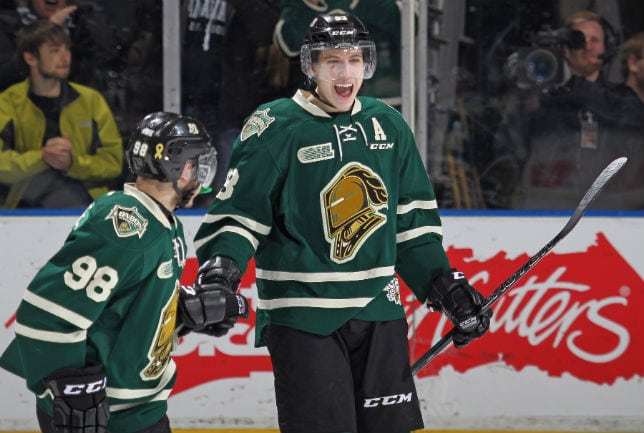

For teen hockey players, less is more. Playing year round actually hurts their development in two ways: it decreases their overall athleticism, and it increases the likelihood of typical hockey injuries.
 Want your kids to get better at hockey? Have them play less, experts say
Want your kids to get better at hockey? Have them play less, experts sayBen Prentiss sees it all the time. Parents come in to his Connecticut gym and expect him to put their child on a path to becoming Jonathan Quick, Max Pacioretty, Kevin Shattenkirk or any of the other NHL stars he trains during the off-season. What they don’t know is that comparatively little training for his high-profile clients involves hockey. In the summer, his guys don’t even hit the ice until late July or early August. Hockey may be a year-round job for NHL players, but it shouldn’t be for kids. It actually hurts their development in two ways: it decreases their overall athleticism, and it increases the likelihood of typical hockey injuries like torn labrums, hip impingements and groin problems. “That’s a big, big, big problem now,” Prentiss said. “These kids, who are 12 to 15, they’re playing 70 games a year…All they do is play hockey. They don’t get their feet out of skates, they play too many games and they develop an overuse injury.”
To counteract this, Prentiss gets his pre-teen and early teen clients to play other sports. The best ones require different muscles while increasing mobility and flexibility. He even has his NHL clients do non-hockey workouts. At the beginning of their off-season, he has them do gymnastics-type exercises to work muscles they don’t usually use.
Daniel Noble sees the all-hockey all-the-time parental philosophy far too often as well. And like Prentiss, he incorporates other sports into training. He had Maple Leafs first-rounder Mitch Marner playing handball and badminton, and both of the Ritchie brothers (Brett and Nick) were fanatical tennis players. “Overspecialization is a big problem in hockey,” said Noble, director of athlete performance at the Hill Academy in Toronto. “We have kids as young as seven, eight years old and they can’t even throw a baseball.” It sounds counterintuitive, but generalizing kids’ repertoire of sports will help them specialize down the road. Tyler Goodale, for one, has seen the benefits of being a multi-sport athlete firsthand. In the off-season, he trains Jamie Benn, who played high-level baseball throughout his teens until hockey eventually took over. “Playing baseball was huge for him,” said Goodale, strength and conditioning coach at the Canadian Sports Institute. “He improved his hand-eye coordination, his strength from swinging the bat and throwing the ball. He was also running, and running speed correlates really strongly with skating speed.” Goodale suggests a sliding scale of sports depending on age: one or two sports for 17- to 19-year-olds, three sports for 13- to 16-year-olds, four for nine- to 12-year-olds and as many as six for three- to nine-years olds.
This is an edited version of a feature that appeared in the Playoff Preview edition of The Hockey News magazine. Get in-depth features like this one, and much more, by subscribing now.


